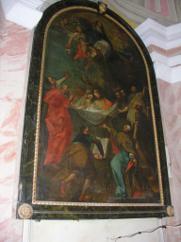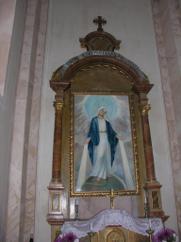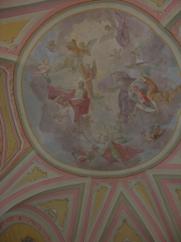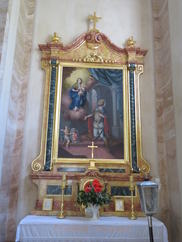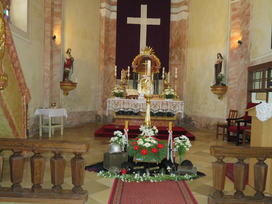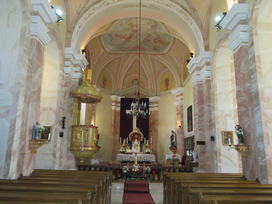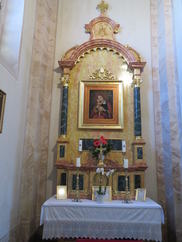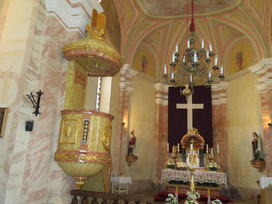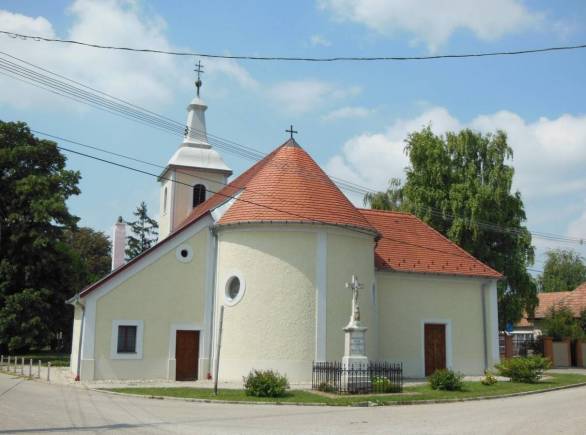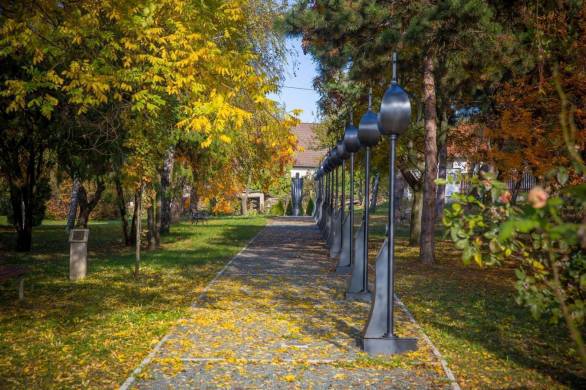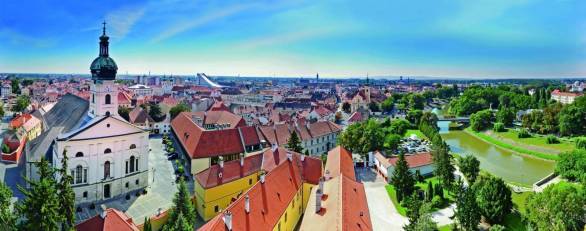Church of the Assumption
The villages of Nagypáli and Kispáli belonged under the patronship of the Pápoc Augustine Provostry, founded in 1365. As a result of the Rába’s frequent floods, Kispáli became depopulated over time. The current church was built in 1642 at the behest of Provost Matthias Nyeki Weöres on the site of the wooden church already standing in Nagypáli. It was burned and looted by the Turks in 1683. Renovated in 1693, the tower was added by Pápoc Provost Kristóf Schogg in 1770. The Pope’s proclaimed place of pilgrimage was enlarged in 1804 with side aisles at the expense of Provost Antal Majláth. The high altarpiece of the Assumption of Mary, created at that time, is the work of Viennese artist Josef Schied. The sanctuary’s vaulting features a fresco of the Holy Trinity, while the side altars feature images of St Ladislaus and Mary of Lourdes. The church’s most valuable painting is a scene from the life of St John of Alexandria.
(The relic of the Patriarch of Alexandria, who lived at the turn of the 6th and 7th centuries and is famous for his gifts, was preserved in the Royal Chapel of Buda during the reign of Matthias Corvinus. From there, they were taken to the Pauline Monastery of Máriavölgy and finally to Bratislava, to the coronation capital’s church of St Martin, where the relic is still held in high regard.)
